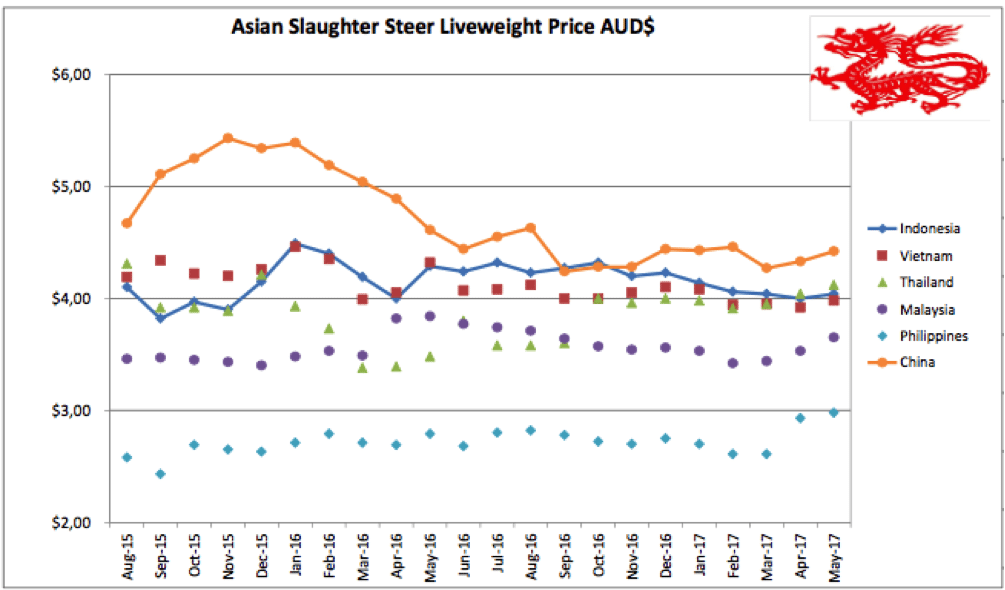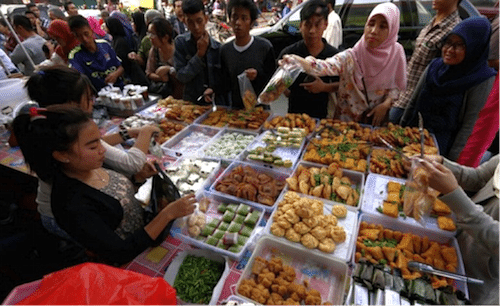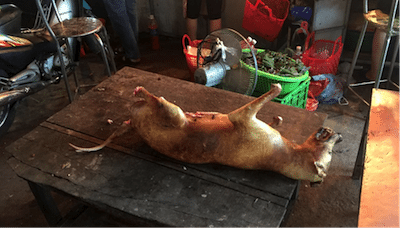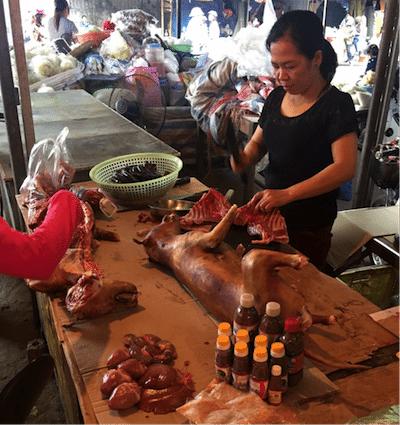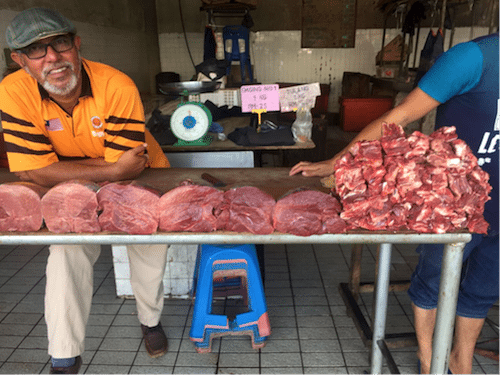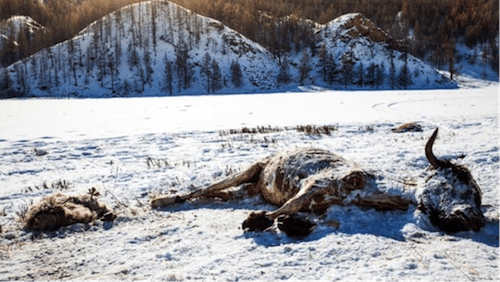Indonesia: Slaughter Steers AUD $4.04 /kg live weight (Rp 9,900 = $1AUD)
The indicator price of steers has remained static this month at Rp40,000 (range Rp39,500 to 43,000) even with the beginning of Ramadan on the 26th May which has always resulted in a small price spike.
That short price spike has however been enjoyed by Indian buffalo beef traders with reports of rates as high as Rp110,000 per kg in some wet markets.
The government is trying to force traders to keep their retail prices at the official government maximum rates (Rp80,000) but it’s just too hard to control every small trader across the thousands of wet markets serving the 68 million consumers in West Java.
Feedlots are averaging about 50pc capacity with many inventories including large numbers of heavy cattle which are not moving fast enough and therefore only getting fatter and losing value. These cattle were purchased at the high wet season incoming prices and are now going out at the lowest prices seen for some time so the financial pain for lot feeders is severe and looks like getting worse.
With many cattle now in the lot for 150 days or more, every additional day on feed is a financial loss as fat to beef ratios steadily increase. The need to reduce these long-fed inventories as soon as possible could push prices even lower through June as slaughter numbers are expected continue at about 50pc of pre-Indian beef numbers despite the fact that we are now in the month of Ramadan.
Rates for recent shipments have been down a little from the wet season highs but this small ray of hope for lower CIF prices appears to be disappearing quickly as prices across Australia are once again on the rise.
I am advised that while northern Australian feeder steers were selling for around AUD$3.20 to $3.25 during April, they are now bringing as much as $3.40 to $3.50.
This trend is the reverse of the traditional price cycle for northern cattle. The explanation I am given is that supplies are very low with the usual flush of feeders coming onto the northern Australian market in May and June not being seen this year.
In addition to this, the season is generally very favourable across the north so there is no rush from producers to off-load cattle to conserve their remaining feed. Holding back on sales until after the new financial year might also be a factor, one which is a relatively new experience for many producers.
I am still getting many reports of Jakarta wet market retailers unable to obtain supplies of Indian beef for several months despite lots of customers asking for the product. The reasons are still not clear but appear to involve some sort of dispute over pricing.
My agents tell me that Spanish beef seems to have disappeared from the market with no supplies seen for several weeks. It is not clear if this is a temporary or permanent change.
Indonesian beef cattle farmers, the majority with only 1 or 2 cows, are confused by the mixed signals sent by the government. On the one hand they are being encouraged to produce more calves to improve self-sufficiency with the introduction of the “Upsus Siwab” (Special acceleration program in increasing pregnant cattle and buffalo population) through the offer of free semen for Artificial Insemination. At the same time the market prices for beef and live slaughter cattle are being forced down by the introduction of Indian beef which has collapsed demand for slaughter cattle. I am unable to understand how a few free doses of semen are going to compensate for a significantly lower price for the end product. The prospect of a long term lowering of beef prices through the permanent presence of Indian beef can only encourage small farmers to slaughter their cows and cut their losses before prices fall further.
The Director General of Animal Health has announced that 30,000 head of feeder cattle will be imported from Mexico although the timing of the first shipment has not been confirmed as there are still some issues to resolve in terms of the cost of transporting cattle on the 25 day journey across the Pacific.
The ban on the slaughter of Indian cattle and buffalo
The following notes are taken from and article published by “The Indian Express” on Tuesday May 30. In summary, this author believes that the proposed ban by the Federal government has a zero chance of success as the current approach is unconstitutional because the federal government is trying to ban cattle and buffalo slaughter while this legislative question is the sole responsibility of the states.
“There is no religious protection for the cow or any other cattle under the constitution and the issue of cow slaughter in the Directive Principles of State Policy is tied to agriculture and the interests of animal husbandry.
That approach flows into the constitutional logic of leaving the power of determining cow slaughter regulations exclusively to the states because issues relating to livestock are invariably tied to local conditions of agriculture, availability of fodder, customs, dietary preferences, etc. An all-India anti-cow slaughter legislation by Parliament is unviable because the constitution does not give Parliament the power to make such a law.”
Ramadan began on 26 May. Every evening about 6 pm people flock to street stalls selling traditional foods for breaking their fast, usually lots of very sweet and delicious treats.
Busy sales at about 6pm, the time of breaking the fast – buka puasa.
Vietnam: Slaughter Steers AUD $3.98 / kg (VND16,850 to $1AUD)
Summer time in Vietnam is the low season for beef consumption with local currency prices down slightly on last month. In the north the best bulls can achieve up to D76,000 per kg while steers with lean carcasses make between D71.5 and D73,000. In the south, low-fat steers can make up to D68,000 while fat animals will be discounted to as low as D63,000 per kg. I have used Dong67,000 as the indicator rate again for May.
General demand is weak with feedlots gradually reducing their inventories through slowing the rate of imports.
I visited Dien Bien Phu in north-eastern Vietnam during May and discovered that one of the biggest sellers in the wet market meat stalls is dog.
Local beef was selling for Dong 250,000 per kg with pork at D70,000 per kg and dog at Dong140,000 per kg. The butchers explained that they killed about 5 head of cattle per night for Dien Bien Phu, a city of about 100,000 people. From the activity in the market on the morning that I was there, I estimate that they were selling at least that many dogs per day too.
Cooked dog selling @ AUD$8.30 per kg compared to beef @$14.80
Nothing from the dog is wasted with offals and intestine sausages selling strongly.
Thailand: Slaughter Steers AUD $4.12/kg (Baht 25.5 to $1AUD)
Prices remain stable with domestic demand steady. The increase in this month’s AUD price is purely a result of the weak Aussie $.
Official statistics for the Thai beef herd indicate that the domestic herd was about 10 million head in 2007 while the current estimate is 4 million head.
The Department of Agriculture recently conducted a survey to check for Beta-agonists in slaughter cattle and found only three positive samples from 503 head tested. It certainly looks like the ban is working so exports to Vietnam will continue to be unattractive.
Malaysia: Slaughter Steers AUD $3.65 per/kg (RM3.19 to $1 AUD)
I passed through Tawau in south-eastern Sabah during May where this wet market stallholder told me that his frozen beef on display was all from New Zealand. A very knowledgeable beef expert who examined this photo told me that this is probably a fib as in his view the knuckle on the left is most likely Indian buffalo while the rib bones on the right are definitely not buffalo and therefore could be the only New Zealand product in the frame.
The knuckle on the left is selling for RM25 or AUD$7.84 per kg while the rib bones are RM12 or $3.76
Philippines: Slaughter Cattle AUD $2.98/kg (Peso 36.9 to AUD$1)
Prices have stabilized and the market is firm despite the declaration of Martial Law in Mindanao to deal with the Islamist rebels in Marawi City. President Duterte is using a similar, no compromise approach to these rebels as he has with the drug trade, give up or die! Otherwise it is business as usual with good seasons and favourable economic conditions.
China: Slaughter Cattle AUD $4.42/kg (RMB 5.09 = AUD$1)
A weaker AUD is the only reason for the higher price above as local rates in Beijing remain the same as last month at Y22.5 per kg.
The steady price increases continue in Shanghai however where the rate has increased for the fourth straight month (Y16.4, Y18, Y19.2 and Y20 this month).
Drought in Mongolia
My agent in northern China reports that the drought in Mongolia is ongoing despite a modest amount of recent rain in some restricted areas. The drought conditions are having the predictable effect of forcing cattle (and sheep and buffalo and camels) onto the market just the way it happens in Australia.
This is naturally having a depressing affect on the local slaughter cattle prices which are under further pressure from cheap imports of frozen product. The Chinese government has the difficult task of balancing its support for local producers with the need to provide reasonably priced product for its massive population.
Perhaps these drought conditions and the subsequent pressure on local producers is the reason why the Chinese government continues to enforce a live cattle import protocol that is essentially unviable. Perhaps they are in effect saying, yes to imports but not until the drought has broken. If that is so then once the rain comes, as it eventually will, then we might see some changes to the protocols to make Australian live cattle imports a potentially profitable proposition.
Australia is the only country in the world with a protocol approved for importation of live feeder and slaughter cattle to China.
At its peak, the Chinese live steer prices were at about AUD$5.50 per kg in November 2015 while today’s rates are $4.42.
When the Australian drought broke, prices lifted by around 40% in only a few months so if something similar happens in China then the local prices might approach the AUD$6.00 per kg range. If that happens and the protocol is relaxed because local producers no longer need protection then the long predicted surge of live cattle exports might well get underway. The impact on the Australian market would be massive.
Beef Central recently published an article in which visitors to China described the massive build-up of feedlot and abattoir infrastructure across the country even though the current numbers for imports don’t make any commercial sense. I have received the same advice from many independent sources so someone must know something that we don’t. Announcements that Gina Rinehart’s company plans to expand her beef business into China might also suggest that she knows what is coming and is getting ready to take advantage of the sudden rush to supply once the drought is broken.
Droughts always break sooner or later so we will just have to wait to find out if this proposition is correct.
Droughts are bad enough but when they are combined with some of the harshest winters in the world, the cumulative losses must be huge. When the unusually high drought induced slaughter rates are combined with deaths in the field and dramatic reductions in reproduction, the decline in herd numbers in one of the nations most important livestock producing regions could be catastrophic.
Photo from the internet: The Mongolian winter of early 2017 was the second “dzud” in a row. A dzud is a summer drought followed by an extremely harsh and prolonged winter including heavy snows and temperatures of minus 40 to minus 50 Celsius.
Market price table for May 2017
(All prices converted to AUD)
These figures are converted to AUD$ from their respective currencies which are changing every day so the actual prices here are corrupted slightly by constant foreign exchange fluctuations. The AUD$ figures presented below should be regarded as reliable trends rather than exact individual prices. Where possible the meat cut used for pricing in the wet and supermarket is Knuckle/Round.
These figures are converted to AUD$ from their respective currencies which are changing every day so the actual prices here are corrupted slightly by constant foreign exchange fluctuations. The AUD$ figures presented below should be regarded as reliable trends rather than exact individual prices. Where possible the meat cut used for pricing in the wet and supermarket is Knuckle / Round.
Location |
Date |
Wet MarketAUD$/kg |
Super market$/kg |
Broiler chicken$/kg |
Live SteerSlaughter WtAUD$/kg |
| Indonesia | Dec 16 | 13.26 | 17.86 | 4.39 | 4.23 |
| Rp 9,900 | January 17 | 13.13 | 17.77 | 3.33 | 4.14 |
| Rp10,230 | February 17 | 12.71 | 14.96 | 2.64 | 4.06 |
| Rp10,150 | March 17 | 13.05 | 20.00 | 3.65 | 4.04 |
| Rp10,000 | April 17 | 13.20 | 20.30 | 3.40 | 4.00 |
| Rp 9,900 | May 17 | 13.43 | 15.35 | 2.93 | 4.04 |
| Philippines | Dec 16 | 9.06 | 8.79 | 3.84 | 2.75 |
| P37.0 | January 17 | 9.19 | 8.11 | 3.38 | 2.70 |
| P38.3 | Feb 17 | 7.83 | 8.88 | 3.39 | 2.61 |
| P38.3 | March 17 | 8.09 | 8.88 | 3.26 | 2.61 |
| P37.5 | April 17 | 9.33 | 9.07 | 3.33 | 2.93 |
| P36.9 | May 17 | 8.67 | 8.94 | 3.66 | 2.98 |
| Thailand | Dec 16 | 9.16 | 10.69 | 2.67 | 4.00 |
| Bht 26.4 | January 17 | 9.09 | 10.60 | 2.65 | 3.98 |
| Bht 26.85 | Feb 17 | 8.94 | 10.43 | 2.61 | 3.91 |
| Bht 26.6 | March 17 | 9.02 | 10.53 | 2.63 | 3.95 |
| Bht 26 | April 17 | 9.23 | 10.77 | 2.69 | 4.04 |
| Bht 25.5 | May 17 | 9.41 | 10.90 | 2.74 | 4.12 |
| Malaysia | Dec 16 | 9.17 5.69 | 10.09 | 1.99 | 3.56 |
| Rg 3.30 | January 17 | 9.09 5.64 | 10.00 | 1.97 | 3.53 |
| Rg 3.41 | Feb 17 | 8.79 5.45 | 9.68 | 1.90 | 3.42 |
| Rg 3.39 | March 17 | 8.84 5.75 | 9.73 | 2.04 | 3.44 |
| Rg 3.3 | April 17 | 9.09 6.60 | 10.30 | 1.97 | 3.53 |
| Rg 3.19 | May 17 | 9.40 6.27 | 9.40 | 2.13 | 3.65 |
| Vietnam HCM | Dec 16 | 15.06 | 16.86 | 7.83 | 4.10 |
| D 16,800 | January 17 | 14.88 | 17.98 | 8.33 | 4.08 |
| D 17,400 | Feb 17 | 14.37 | 17.36 | 6.89 | 3.94 |
| D 17,350 | March 17 | 14.41 | 17.41 | 6.92 | 3.95 |
| D17,100 | April 17 | 14.62 | 17.66 | 7.02 | 3.92 |
| D16,850 | May 17 | 14.83 | 17.92 | 7.12 | 3.98 |
| China Beijing | Dec 16 | 13.80 | 19.43 | 3.51 | 4.44 |
| Y 5.15 | January 17 | 14.34 | 24.66 | 3.84 | 4.43 |
| Y 5.27 | Feb 17 | 12.14 | 13.66 | 2.85 | 4.46 |
| Y 5.27 | March 17 | 12.14 | 14.04 | 3.41 | 4.27 |
| Y 5.2 | April 17 | 12.31 | 14.62 | 3.65 | 4.33 |
| Y 5.09 | May 17 | 11.79 | 14.93 | 3.73 | 4.42 |
| Shanghai | Dec 16 | 16.57 | 19.53 | 5.52 | 3.21 |
| January 17 | 16.69 | 19.80 | 5.44 | 3.42 | |
| Feb 17 | 14.80 | 18.22 | 4.55 | 3.11 | |
| March 17 | 13.66 | 18.22 | 4.36 | 3.42 | |
| April 17 | 14.62 | 18.85 | 4.42 | 3.69 | |
| May 17 | 14.14 | 19.25 | 4.40 | 3.93 |


